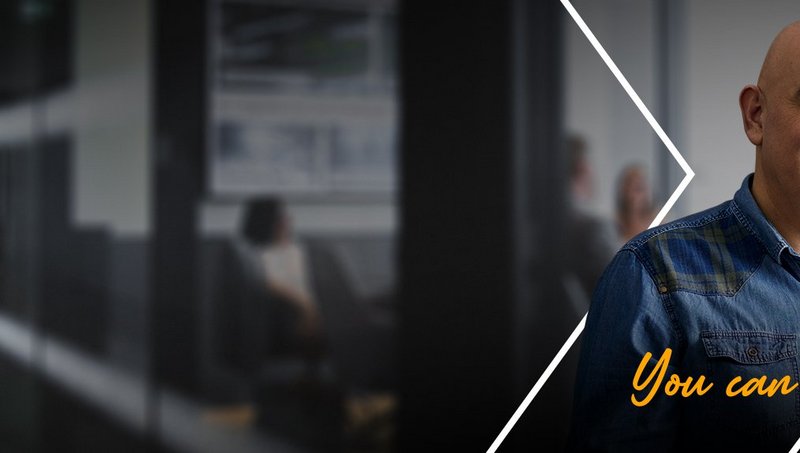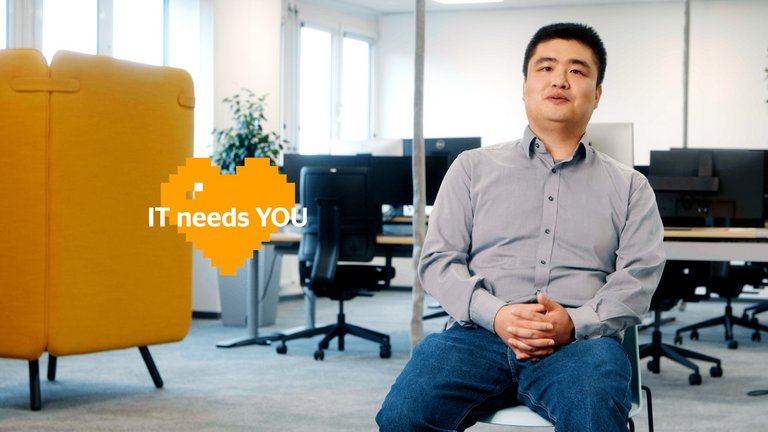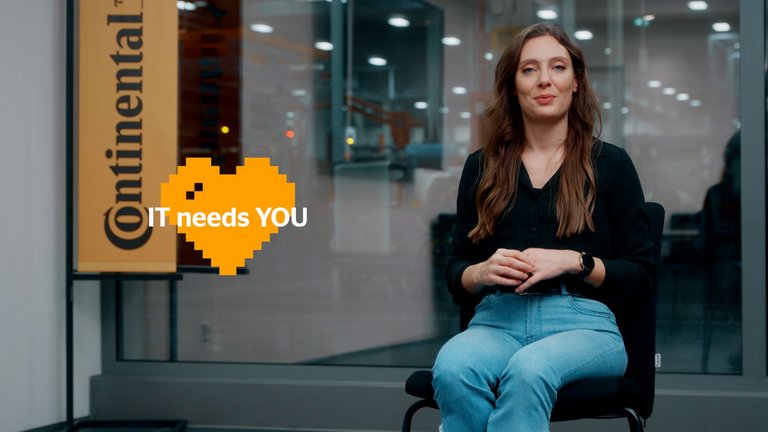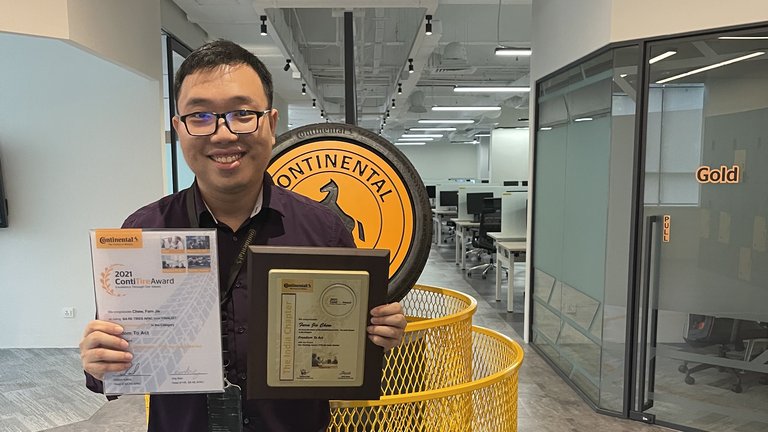IT and Cybersecurity
In this fast-paced field, innovation is the heartbeat and IT professionals are the architects of tomorrow’s technological landscape. But how do Continental, IT and Cybersecurity fit together? Very well, according to around 22,000 employees who work in IT for Continental worldwide.
At Continental, you can work on IT and Cybersecurity topics that change millions of lives for the better. From cutting-edge digital solutions for premium tires to turning whole cars into smart life savers. Or modernizing whole business segments, making them ready for a smarter era whilst improving the future of entire cities.
With an open and supportive culture that values and promotes your ideas.
You decide the path
Whether you want to aim high or stay grounded – we’ve got you covered. With our wide range of career opportunities, you can find the perfect job position and working set-up. Take full advantage of our international network, individual development programs and flexible working models and drive your career the way you want.
Sheikh’s career journey: where focus meets agility
“At Continental, I can work on innovative projects regarding Cybersecurity and Privacy. At the same time, I can follow my passion for sports and spend valuable time with my family.” Sheikh is not only leading the Cybersecurity and Privacy Innovation team at Continental and driving exciting, international projects by building up valuable partnerships. He is also very successful in his favorite sports: cricket.
Watch the film and find out how Continental makes this possible.
Continental and IT: a perfect match
Whether cloud architecture, software development, data science or security and privacy consulting - at Continental there are many different opportunities for IT and Cybersecurity experts to realize their potential.
Find out what it's like to work in Cybersecurity at Continental
Find out what it's like to work in IT at Continental
Discover a job opportunity that fits you
Whether you’re aspiring to take the next step in your professional IT journey or seeking new opportunities, explore our career opportunities and apply now:
A typical work day
The following daily schedule is just an example to illustrate what a typical day might look like. Naturally, the actual schedule may vary depending on individual preferences and circumstances.
I start my day by joining a morning stand-up with my team, a mix of data engineers, product owners, and developers. We discuss progress from the previous day, current blockers, and what each of us plans to accomplish. Since I work in an Agile environment, this brief meeting helps us stay synchronized, ensuring everyone is aligned on our daily objectives. If I’m in my Streaming Data Engineer role, I’ll share updates on any recent changes to our Apache Kafka pipelines or any DevOps challenges that need attention.
After the stand-up, I dive into my main tasks. Today, I’m focusing on optimizing data pipelines for real-time streaming. This involves analyzing and tuning the performance of our microservices architecture to handle large sets of sensor data. I work with Apache Kafka and KStream to ensure that our data pipelines can handle both real-time and batch data processing effectively. If I’m acting as a Senior AI Data Engineer, I might spend this time optimizing our AWS infrastructure, making sure it’s secure, scalable, and reliable.
At this point, I also check the health of the CI/CD pipeline and Kubernetes clusters, ensuring our deployments are stable and any anomalies are addressed quickly. I may also collaborate with the DevOps team to ensure that our monitoring solutions, such as Kibana and Grafana, are configured properly to track key performance metrics.
I step away for a quick coffee break and chat with a couple of colleagues. Sometimes we use this time to discuss new technologies or tools that might improve our workflow, especially in terms of data orchestration (like Airflow) or security practices.
Back at my desk, I work on implementing new features for our data analysis tools or enhancing current services. If I’m working as the IT ELM Product Owner today, I’ll be breaking down new feature requests, refining the product backlog, and ensuring that our development team has clear, well-defined requirements to work on. I set story acceptance criteria, meet with stakeholders, and prioritize tasks based on our team’s capacity and upcoming release cycles.
In my AI Data Engineer role, I might be troubleshooting real-time data issues, improving the efficiency of our data processing pipelines, or implementing new machine learning models to better interpret sensor data. This also includes collaborating with cross-functional teams to gather and clarify requirements for upcoming sprints.
I take a 30-minute lunch break, usually grabbing something quick from the cafeteria. It’s a good time to relax and disconnect for a bit before jumping back into the complexities of the data and infrastructure work.
After lunch, I shift my focus to computer vision tasks. If I’m in my Computer Vision Software Engineer role, this is when I work on developing and optimizing machine learning models for image recognition, object detection, or classification. I use frameworks like TensorFlow or PyTorch to create and test new deep learning architectures, such as convolutional neural networks (CNNs). Ensuring the models are robust, scalable, and can be deployed in real-time environments is critical.
If needed, I analyze large datasets to ensure data quality and consistency, creating semantic metadata that provides key insights for the AI algorithms used in autonomous mobility systems. I might also collaborate with the Data Enrichment team to streamline metadata generation pipelines.
I take this time to sync up with my team again and review any pending code submissions. I participate in code reviews to ensure that all new features or bug fixes meet our quality standards. This is also a great opportunity to share knowledge or offer feedback on best practices when it comes to code optimization or security measures.
If I’m acting as the IT ELM Product Owner, I’ll use this time to gather feedback from the team on feature development or sprint progress and make any necessary adjustments to our upcoming deliverables.
In the final part of the day, I switch gears to focus on security and system audits. If I’m working as a Senior AI Data Engineer, I review the security of our AWS cloud infrastructure, ensuring that all data is encrypted and that access controls are properly set. I may also run automated security scans to identify any vulnerabilities in our microservices or Kubernetes deployments.
If cybersecurity concerns or stakeholder requirements arise, I also work on coordinating with the team to ensure compliance with data protection regulations and cybersecurity policies, making adjustments where needed. I track performance and ensure that our services are continuously improving while remaining secure.
As the day comes to a close, I spend some time documenting the work I’ve completed, ensuring everything is properly tracked in Jira or Confluence. This is also when I file any reports for system audits, or record results from model testing. I touch base with the team one last time, address any urgent issues, and ensure a smooth handover for the next day.
After making sure all my tasks are in order, I clock out and end the shift, feeling accomplished after a day of tackling both technical and strategic challenges.

































